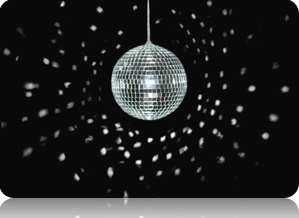Lesson 5: Separating Rock and Pop
Lesson 5: Separating Rock and Pop

Lesson 5: Separating Rock and Pop
Separating Rock and Pop
During the 1960s, the United States saw increasing social and political unrest. From social movements such as the Civil Rights Movement and the Feminist Movement to the increasing presence of the United States in the Vietnam War, the decade had a number of important social and political issues that dominated the landscape. These issues, perhaps not surprisingly, found their way into music.
 Many song lyrics during the 1960s reflected the social and political issues. Some songs were explicit protest songs against war, racial discrimination, and political corruption. In some ways, the inclusion of these concerns in music helped to create a separation between rock and pop music. With lighter, more carefree topics and themes, pop music was accessible to a wider range of the population than the rock songs that were promoting particular social or political beliefs. Bob Dylan is one example of an artist who infused his music with protest. As one of the most influential artists of the 1960s, Dylan blurred the lines between rock and folk music with his use of the electric guitar and folk music structures. Along with Dylan, artists including Joan Baez, Neil Young, The Grateful Dead, and the Eagles blurred the lines between the music genres of rock, folk, country, and the emerging pop music.
Many song lyrics during the 1960s reflected the social and political issues. Some songs were explicit protest songs against war, racial discrimination, and political corruption. In some ways, the inclusion of these concerns in music helped to create a separation between rock and pop music. With lighter, more carefree topics and themes, pop music was accessible to a wider range of the population than the rock songs that were promoting particular social or political beliefs. Bob Dylan is one example of an artist who infused his music with protest. As one of the most influential artists of the 1960s, Dylan blurred the lines between rock and folk music with his use of the electric guitar and folk music structures. Along with Dylan, artists including Joan Baez, Neil Young, The Grateful Dead, and the Eagles blurred the lines between the music genres of rock, folk, country, and the emerging pop music.
Another feature of the popular music of the 1960s was the so-called British invasion. Some of the British bands of the time were modeled on the successful American bands, particularly in the areas of producing recordings and touring to promote the recordings. In the 1960s, some of these British groups became influential in North America as well. The biggest group of the British Invasion was, of course, the Beatles. While the Beatles sometimes sang about social issues, they also had songs with catchy lyrics and melodies. This would be the centerpiece of pop music through the next several decades.
The 70s
Between 1973 and 1978, the music industry doubled in size. One of the effects of this change was that the various genres of music became increasingly separated, as record companies marketed artists and albums within a particular genre. Definitions of “rock” music became narrower, further separating that genre from what was known as “pop” music (not to mention the other music genres).

Building on the success of groups like the Mamas and the Papas, pop music in the 1970s featured many of the same catchy tunes and themes about love and relationships. Elton John, along with Olivia Newton John, ABBA, and many others, were popular artists during this decade, drawing on the elements that had made previous pop artists successful. One musical genre that developed in the 1970s was disco. Although disco began outside of mainstream America, it ended up crossing over into mainstream pop music. Mixing “soaring” vocals with a beat that encouraged dancing, disco became the dance music of the decade. The music often had 100 to 130 beats per minute (a relatively fast tempo) and the pulse of the rhythm was often emphasized.
By the mid-1970s, disco was topping many of the music charts. Popular artists and groups included Donna Summer, the Bee Gees, the Jacksons, and KC and the Sunshine Band. Disco also represents the impact of linking music and movies. The release of Saturday Night Fever in 1977 broadened disco’s popularity. While disco evolved over time, it remained a singer’s form of pop music, highlighting the vocal talents of the artists who sang it. Disco also relied on producers and music studios. In some cases, parts of the music were produced by solo artists and then combined with the singer’s lyrics.
By its height in the late 1970s, disco brought together the most diverse group of people in its audience since the music of the 1950s. By 1979, about 200 radio stations across the U.S. were specializing in disco. Although it would decline in popularity in the years after that, some of the elements of disco would continue into new forms of music, including some of the dance music present today.